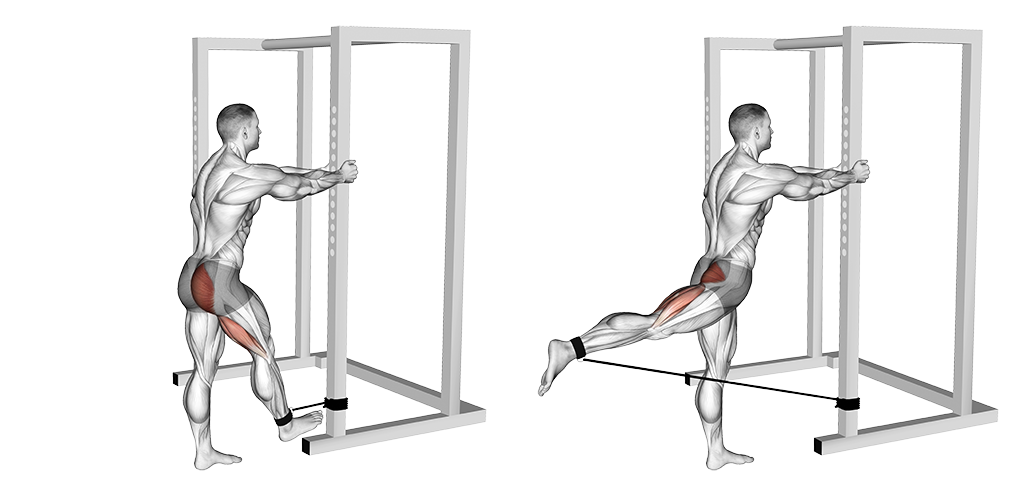Exercise Anatomy
Hip Joint Extension
Hip Joint Extension is a fundamental movement that holds significant value in enhancing lower body strength and function. This exercise involves the straightening of the hip joint, activating the glutes and hamstrings. It's a key element in various compound movements like squats and deadlifts, making it essential for overall lower body development. Incorporating Hip Joint Extension into your workout routine not only contributes to a sculpted and powerful lower body but also improves athletic performance and daily functional movements. Simple yet effective, this exercise is a cornerstone for anyone looking to build a strong foundation in lower body strength.

Major Muscles and Actions Involved
Hip Joint Extension involves the primary joint action of straightening the hip joint, moving the thigh backward. This movement engages the gluteus maximus, the largest muscle in the buttocks, and the hamstrings, specifically the biceps femoris, semitendinosus, and semimembranosus. This exercise is crucial for targeting and strengthening these muscle groups, promoting overall lower body strength and functionality.

Sports Uses
Hip Joint Extension proves to be directly beneficial for a range of sport activities that demand lower body power and performance. Athletes in track and field, especially sprinters, benefit from the explosive hip extension during acceleration and maximum speed phases. Football players, particularly those involved in kicking and sprinting, find this exercise essential for enhancing the power generated in the lower body. Additionally, weightlifters and powerlifters incorporate Hip Joint Extension into their training regimens to strengthen the posterior chain, contributing to improved performance in lifts like squats and deadlifts. Overall, this fundamental movement pattern is integral for athletes seeking to enhance their lower body strength and power across various sports disciplines.
Exercise Tips
- Technique: Execute Hip Joint Extension with proper form by maintaining a neutral spine and engaging the glutes and hamstrings. Ensure a smooth and controlled movement without hyperextending the lower back.
- Range of Motion: Focus on achieving a full range of motion, emphasizing the extension of the hip joint to activate the glutes and hamstrings fully.
- Amount of Weight Used: Begin with bodyweight exercises and gradually incorporate resistance as needed. Prioritize form over the amount of weight to prevent compensation and injury.
- Grip: This exercise typically involves a standing or lying position, so there is no specific grip involved. However, ensure a stable stance or posture to support the movement.
- Variations: Experiment with variations like Romanian deadlifts, glute bridges, or hip thrusts to diversify your training and target different aspects of the hip extension movement.
- Unique Muscle Involvement: Hip Joint Extension primarily engages the gluteus maximus and hamstrings. Ensure proper activation of these muscles throughout the movement for optimal effectiveness.
- Breathing: Inhale before initiating the movement and exhale as you extend the hip joint. Maintain a consistent breathing pattern to support core stability and overall control during the exercise.
Mastering these tips will help you perform Hip Joint Extension effectively, promoting lower body strength, muscle development, and improved functional performance.
